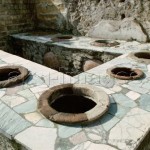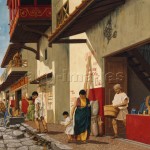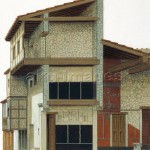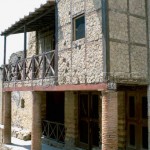A funny thing happened on the way to the Forum…
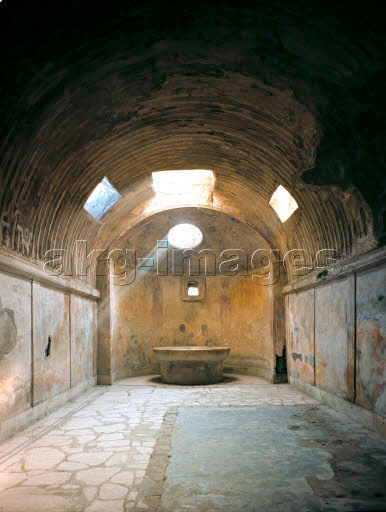 Next month it will be ten years since I started working at akg-images. My first job was as a picture researcher and, in all those years, one of the topics that is always being researched somewhere by someone is Pompeii.
Next month it will be ten years since I started working at akg-images. My first job was as a picture researcher and, in all those years, one of the topics that is always being researched somewhere by someone is Pompeii.
My summer holiday this year was entirely based around a desire to visit Pompeii and its lesser-known neighbour Herculaneum. Using that as a starting point, a holiday was worked out that took in Sorrento, Naples, Amalfi and Ischia. Although the food was wonderful, the weather warm and the public transport surprisingly reliable, the absolute highlights were the days spent in Herculaneum and Pompeii.
Nothing could prepare me for the sheer size of Pompeii, even though I had browsed through hundreds of transparencies and scans in my time here. Not even a pre-Pompeii day trip to the Archaeological Museum in Naples to see the mosaics and sculptures extracted from Pompeii could impress upon me the enormity of the site. On the one hand this was a struggle: it meant trekking quite some way in the midday heat to visit the outermost villa, the Villa dei Misteri. On the other hand the scale of Pompeii means that you can find quiet spots away from the dozens of tour groups: the Villa dei Misteri, which for me was the absolute highlight with its incredible frescoed scenes, was deserted when we got there and we were able to explore it in peace and silence!
Herculaneum is smaller than Pompeii but, for me, was a much more overwhelming experience. Whereas Pompeii had first been smothered in ash cloud from Vesuvius, Herculaneum took a direct lava hit. Pompeii went up in flames but the superheated lava only charred Herculaneum, so wood, papyrus, even clothing, were all preserved by the lava rather than being burnt outright.
Pompeii is relatively flat architecturally, with only the ground floor of most buildings remaining: the wooden floors caught fire and the upper floors collapsed. This didn’t happen in Herculaneum. There are upper floors to buildings in Herculaneum still held up by the same wooden beams that were there when Vesuvius erupted. It’s an incredible sight to see: 2000-year-old wooden staircases, a little blackened but still very much identifiable as stairs!
I will admit to being overcome with emotion in Herculaneum in a way I wasn’t in Pompeii: the height and relative intactness of the buildings made it feel much more like a town that people had only just deserted. Also, seventeen years before Vesuvius erupted, there had been a serious earthquake which had damaged much of Herculaneum. So when Vesuvius erupted in 79 AD, it covered frescoes and mosaics that had only recently been installed in buildings that had only recently been repaired after the earthquake. There is an incredible vibrancy to the art in Herculaneum to which, I’m afraid, photos cannot do adequate justice. I was really looking forward to seeing the mosaic of Poseidon and the nymph Amphitrite, one of the real jewels of Herculaneum. When I finally found it the colour and ‘newness’ of the mosaic shocked me so much it made me cry. It was extraordinary in every sense.
Needless to say, we have many many photographs of both sites in the archive, along with Peter Connolly’s wonderful reconstructions. Included in this tiny selection below is also a photo of me wandering about in the heat of Pompeii (“Mad dogs and Englishmen…”). That image is not, I’m afraid, available for licensing!
